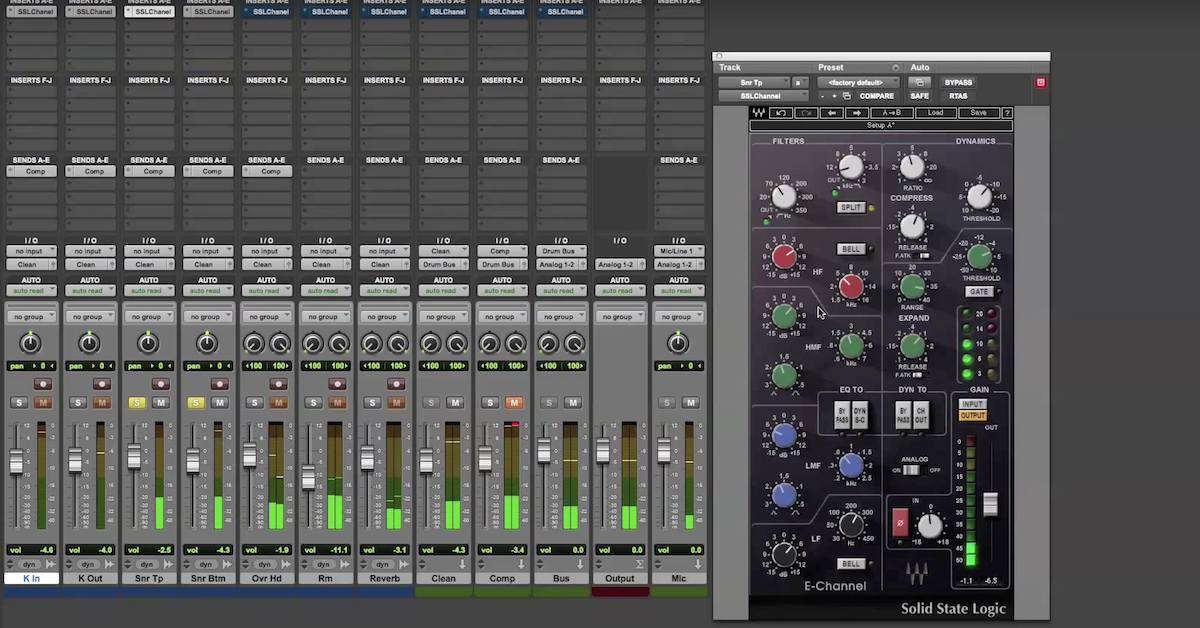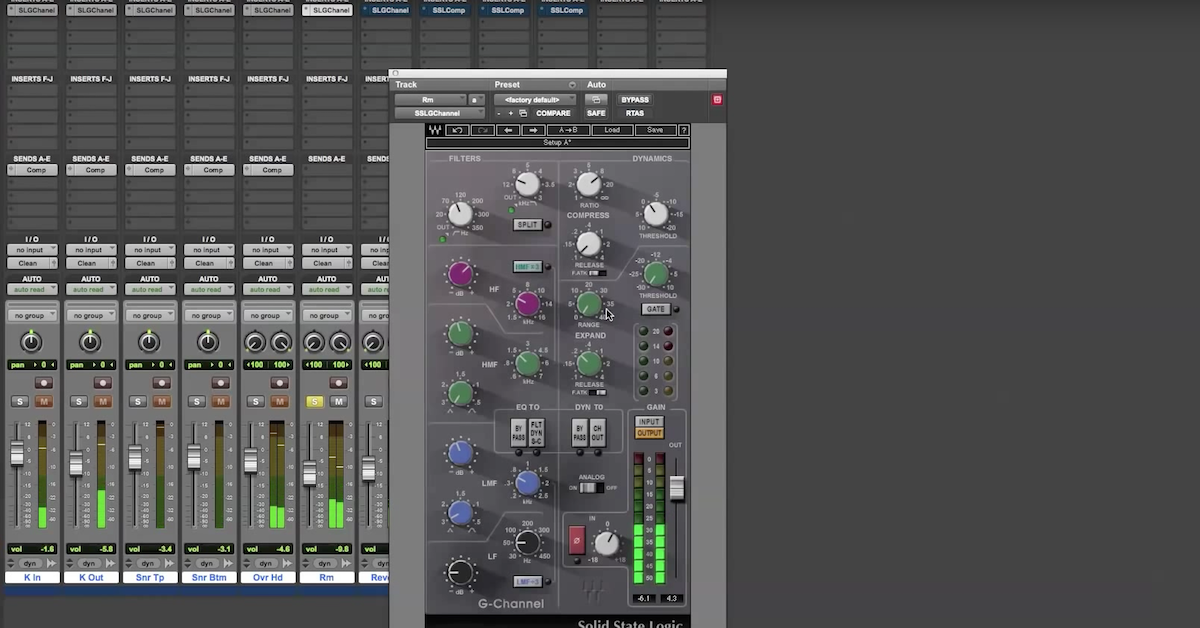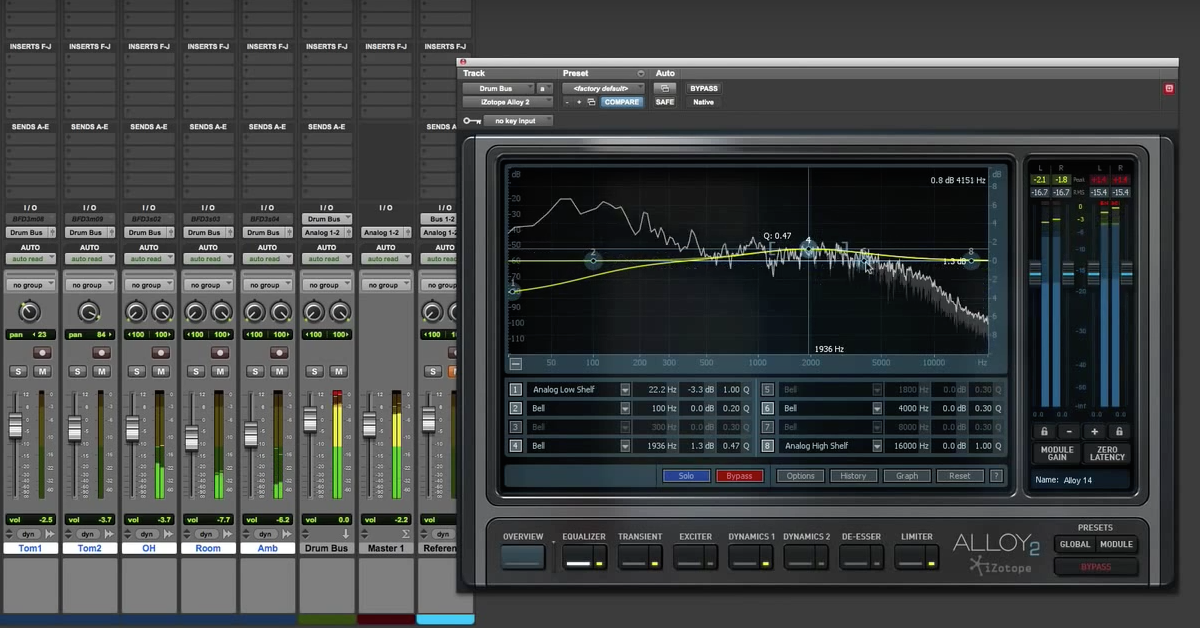7 Tips for Getting a More Dynamic Mix
Article Content
Tips 1-7: use less compression. That’s it. End of article.
Just kidding! Honestly, using less compression is probably the most surefire way to ensure a more dynamic mix. But as someone who loves some heavy handed compression, I’m not even going to pretend that I endorse a suggestion like that.
I’ve seen lots of hand-wringing thinkpieces lamenting the casualties of the “loudness war,” in which the author (usually a non-musician) makes reductive statements about overuse of compression being responsible for punishingly loud recordings from the last 30 or so years. In my opinion, the reality is more complicated than that. Producers had been using aggressive compression for a long time before the loudness war began, managing to make records that are far more dynamic than “Death Magnetic,” “Californication,” or any of the other albums that are cited as being just a few knob twists over the loudness line.
Though I think there’s a valid debate to be had about whether we should even care about escalating loudness in recordings, I also believe that dynamics are inherently valuable to us as music makers. Dynamics (along with melody, harmony, rhythm, and timbre) are one of the main dimensions of music we have to play with. Why limit ourselves?
(Pun maybe half intended.)
Beyond that, I think there are some reasonable indicators that the broader music audience is ready for recordings with more nuanced dynamics than we heard in the peak of the loudness war. The return of vinyl records as a popular medium is one example: vinyl is much less forgiving of aggressive loudness than digital media, being much more prone to introduce unwanted distortion. Even in the digital realm, though, streaming services have done their part by normalizing songs in such a way that ends up punishing masters that prize loudness above all else.
If you’ve ever found yourself listening to a sausage-shaped waveform of one of your finished mixes and wondered why it’s just lacking that certain something, I suggest you consider that a lack of dynamics may be part of the problem. Before you try cranking that master limiter up another click, try these tips instead.
1. Leave Lots of Headroom
If your mix is clipping the master, that’s a problem. Note the period. If the only thing keeping you from clipping the master is a limiter, that’s still a problem — and turning down the master fader is not a solution!
Here’s the issue: if your whole mix is clipping, that means that there’s a bunch of dynamic range happening above 0 dBFS that’s being flattened into nothing. Don’t get me wrong — I love using clipping in a mix — but I like doing it on my terms.
Before you begin the final mix of a track, start by bringing tracks down to leave healthy headroom before you start mixing. I personally will adjust levels in a mix — individual tracks as well as group busses, depending on what I’m working with — so the master shows an overall peak of -9 dBFS. That leaves more than enough headroom to ensure that I can determine the dynamic range of my mix, rather than letting the digital ceiling do it for me.
2. Gain Compensate Insert Effects
It’s very easy to become convinced you like what an insert is doing simply because it made a track louder. Before signing off on processing, double check that you haven’t just increased the overall volume. If you did, correct the plugin or processor’s output so that the overall level is comparable with the insert in and bypassed.
Though this issue can seem kind of innocuous, it can be the first domino in a cascading series of volume bumps that leads you to scrape the ceiling of your 2-buss. (Hopefully my last point made it clear why that’s a problem.) Some fader levels will inevitably have to come up at some point over the course of a mix. Still, that doesn’t mean you should let yourself be fooled into thinking that the compressor setting you just dialed in is magic because it made the track 6 dB louder.
3. Lay Off the Solo Button
Yeah, I know — sometimes soloing tracks is necessary! As mixers and producers, it’s our job to listen for noise, lip smacks, chair squeaks, and other small details that might require soloing to detect.
That being said, processing a track with solo on makes you more likely to hype it up in ways that will eat into headroom for other tracks. Boosting 60 Hz on that bass track *probably does* make it sound huge, but if it swallows the kick drum as a result then the song overall is going to suffer… and chances are your track faders will keep creeping up as the session wears on (again, see point no. 1 for why this is an issue).
Solo tracks when detailed listening is crucial, but otherwise keep an ear on the big picture of the mix. Make mix choices that focus a track’s role in context, and you’ll be less likely to eat into valuable headroom to the detriment of the song.
4. Compress in Parallel
Ok, so remember how I started this article, by advising you to use less compression? That wasn’t a real suggestion, even if a compression-free mix *is* likelier to have a wider dynamic range. The reality is that there are simply too many good reasons to use compression: dynamic control, transient shaping, saturation/excitement… and this is ignoring more niche compression techniques involving sidechain triggering and multiband processing.
So where’s the compromise? How do we get the benefits of compression without ending up with a lifeless, overcrushed mix? Though it’s no magic bullet, compressing in parallel can do a lot to beef up tracks while retaining the dynamic qualities of the source material.
(Quickly, for those who are unfamiliar: the idea here is to duplicate a track, compressing the duplicate heavily while leaving the original uncompressed, then balancing the two to taste. The technique can be applied to just about any kind of processing, not just compression. A compressor with a mix control can be used more or less the same way with no need to duplicate tracks.)
If you feel the urge to use some heavy compression in a mix, but want to keep things dynamic, there’s no need to cut yourself off. Use that compression in parallel! If transient control is what you’re after, the parallel track will add punch while the dry track retains the qualities of a natural performance; if the goal is dynamic leveling, the parallel track will create a baseline volume while the dry track brings emotional swells and fades.
5. Leave Some Tracks Uncompressed
I realize this point may seem to contradict some earlier statements in this article, but some tracks in a mix simply don’t need compression. A mix with depth and dynamics will often include tracks that are left to breathe. Some tracks naturally want to be in the background, and compressing them may work against that.
Compressing everything in a mix will create a higher floor that the most crucial tracks need to rise above. That can lead to a situation where faders keep creeping up over the course of a mix, losing a bit of headroom each time. Hopefully by now I’ve made it clear why that might be a problem.
The solution here is to compress with purpose. Understand why you’re using compression, and how much will be the right amount to achieve the desired result. If you can’t answer those questions, it’s a good sign that you might not need to compress at all.
6. Work With Existing Dynamics
Good musicians will structure the dynamics of the song with their playing. Take the time to listen critically to the source material before applying dynamics processing like compression or limiting. From there, use dynamics processing as needed, favoring applications that preserve existing dynamics.
Even when working with less inherently dynamic source material, this point still holds. Listen for the song’s natural ebb and flow, finding which instruments support it most organically, and make mix decisions that preserve that balance.
7. Accentuate Dynamics with Automation
As much as I stand by my last point about preserving recorded dynamics, I know that there are also times that the dynamics of a recording may not be enough on their own. Maybe the performances just weren’t quite there, or a combination of live and programmed elements may require some intervention in order to create a strong and fluid sense of dynamics in a song.
In those cases, find places where dynamics feel flat and automate changes as necessary.
Bring a vocal track down for a quieter verse, and see what can come along with it. Or bring a drum track up as the arrangement swells to fullness in a chorus, maybe letting the bass come along for the ride.
Conclusion
Taken in isolation, none of these ideas is guaranteed to bring dynamics back to a lifeless mix. Making sure a mix isn’t clipping the master is a good start, but there are still plenty of ways to squash the life out of a mix with lots of headroom. And it’s entirely possible to overdo it with parallel compression, especially when we don’t take a track’s role in context into consideration.
Maintaining that sort of context is a skill that can separate top-tier producers from amateurs. When we can bring that sort of broad view of a track into focus, it becomes possible to surprise and engage listeners with dynamic twists and turns, even if it means steering a track out of the red for a minute or two.






